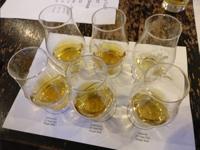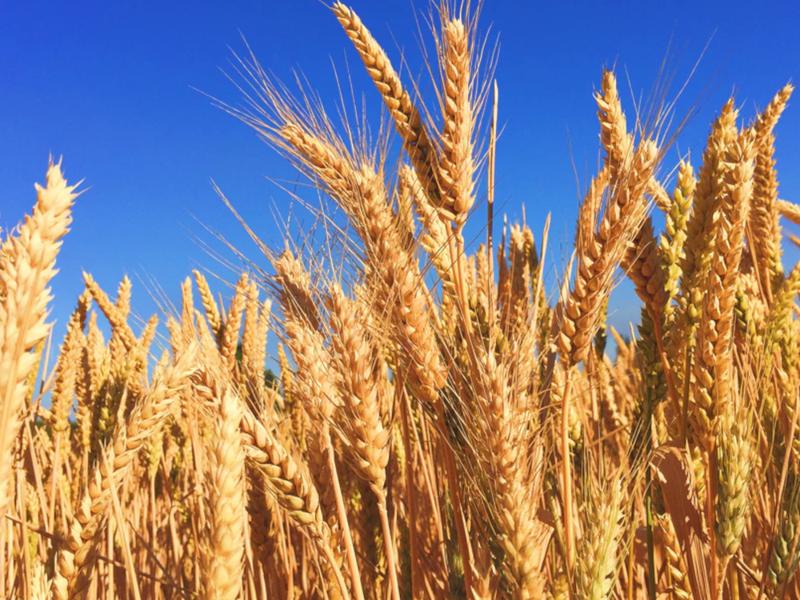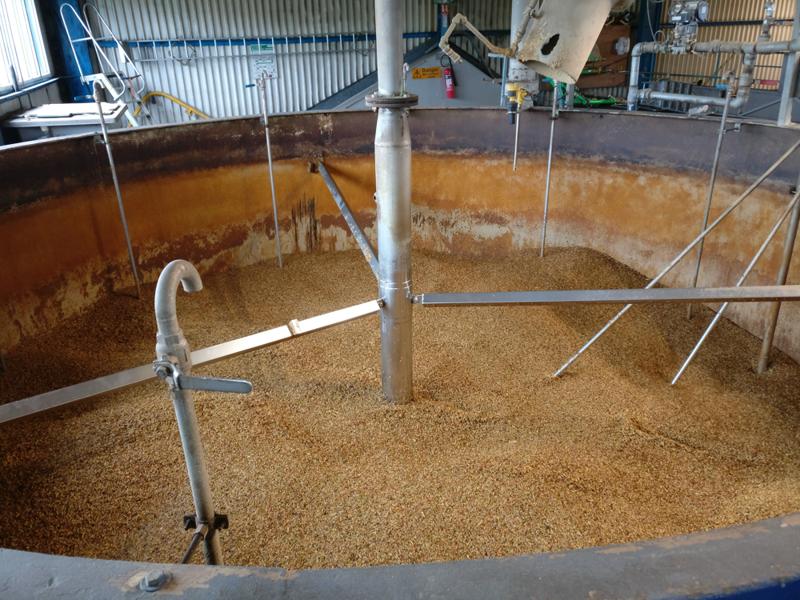Tasting whisky
Contents

The flavour of a whisy is derived in principle from three places, the raw materials used, the production process, and from cask maturation. In addition to these it’s worth also talking about blending, and subsequent processes such as chill filtration, and the addition of spirit caramel. It is also important to remember that tasting whisky is a personal experience and everyone may have different opinions about a particular whisky’s flavor and quality. As you gain more experience tasting whisky, you will develop your own preferences and tastes.
A note on spirit caramel
The first step on any tasting journey is almost always to examine the colour of the spirit, however the widespread use of E150A or spirit caramel within the whisky industry mean that this step is largely irrelevant except when drinking single cask or non-coloured whiskies. During distillery tours or tasting panels and experiences this point is often not noted. Querying the use of spirit caramel will usually elicit one of three responses:
- Being given an extra dram and politely told to be quiet
- A declaration that it makes no difference to the whisky and anyone who disagrees is a fool
- A look of confusion and or discomfort
Other recommendations
- Make sure your palate is clean and clear
- Avoid wearing perfumes or scented products
- Make sure to use suitable glasware, nosing glasses or similar
- Try the spirit first without water, then with water
How to taste a whisky
- Start by examining the whisky’s color and clarity. Hold the glass up to a light source and note the whisky’s color, which can range from pale yellow to dark amber. Also, note any sediment or other particles that may be present in the whisky
- There is no need to swirl the whisky in the glass to release its aromas. Take note of the whisky’s viscosity, or thickness, which can be a clue to its flavour profile and sugar content
- Take a small sip of the whisky and hold it in your mouth for a few seconds. This will allow the whisky to coat your tongue and mouth, giving you a better sense of its flavor and mouthfeel
- As you taste the whisky, pay attention to its flavours and aromas. These can include sweet, spicy, fruity, or earthy notes, among others. Also, note the whisky’s body, or the sense of weight and fullness in your mouth
- After you have tasted the whisky, take a moment to consider its overall flavor, mouthfeel and finish
How humans taste
The perception of flavor in human physiology is a complex process that involves both the senses of taste and smell. Both before and while we eat or drink, molecules enter the nose and come into contact with the specialized cells in the olfactory epithelium. These cells, called olfactory receptors, send signals to the brain through the nervous system, which our brain interprets as a specific smell. At the same time molecules from the food or drink come into contact with the specialized cells in our taste buds. These cells, called taste receptors, also send signals to the brain through the nervous system, which our brain interprets as a specific flavour. These typically trigger associated memories.
While this process is not fully understood smells and tastes can trigger memories because the brain’s olfactory and gustatory (taste) systems are closely connected to the brain’s centers for emotion and memory. This connection is due in part to the fact that the olfactory and gustatory systems share some of the same neural pathways as the brain’s limbic system, which is responsible for processing emotions and forming memories. When we experience a particular smell or taste, the brain processes the sensory information and associates it with a particular emotion or memory. This can happen subconsciously, without us even realizing it. For example, the smell of freshly baked cookies might trigger a happy memory from childhood, or the taste of a certain food might bring back a specific moment from a past vacation. These associations between smells and tastes and emotions and memories can help to explain why certain smells and tastes can trigger strong memories.
Thus when we nose and taste whisky tasting the notes we record are highly personal associations, and as with every other aspect of experience is highly cultural. Scottish and British notes are more likely to make reference to christmas cake when describing sherried whiskies, Americans commonly describe notes of cornbread when discussing bourbon for example. Not identifying or agreeing with a specific tasting note doesn’t mean you’re wrong, the whisky may well have evolved due to oxidation, or it may be experienced differently because of the glassware being used, but it may also be a cultural association.
Sources of whisky flavour and aroma
Whisky flavours and aromas are derive from either:
- raw materials
- production process
- oak or maturation
The final flavours will typically be the result of a complex interplay of whisky maturation but the ability to detect certain aromas or flavours and place then within their part in the production process is the best framework we at Whiskipedia have found to date. During whisky production, a wide range of flavors can be created depending on a variety of factors, including the type of grains used, the distillation process, and the casks used in the ageing process. Common flavors found in whisky include vanilla, honey, caramel, toffee, chocolate, fruit, spices, and smoke, older whiskies will generally have stronger woody notes of leather, tobbaco and polish.

Raw Materials
Flavours found in the raw materials are typically most clearly expressed in new make and younger whiskies, however evolved forms of these will also be present in older whiskies. The notes to look for vary depending on the ingredients used.
- Corn
- Butterscotch, cornbread, sweetcorn, caramel, toffee, burnt sugar, popcorn
- Malted barley
- oatmeal, porridge, barley, flour, malt
- Rye
- Rye bread, gingerbread, allspice, pepercorn
The type of grain used to make whisky can have a significant impact on its flavor. Different grains impart different flavours and aromas, which can help to create the unique characteristics of each whisky. For example, barley is a common grain used in the production of whisky, and it imparts a malty flavor with notes of honey and nuts. Rye, on the other hand, imparts a spicy flavor with notes of pepper and cloves. Whea creates a smooth and slightly sweet spirit. The proportion of different grains used in a whisky (commonly called the mash bill) can also have an impact on its flavor, with some whiskies using a greater proportion of one type of grain to create a specific flavor profile. In general, the type of grain used in the production of whisky can play a significant role in determining its flavor.

Production (fermentation & distillation)
Production process notes often sound particularly unappetising, afterall on paper nobody wants to drink a whisky that tastes like a house fire or burnt rubber. In reality these notes when expressed in the right balance can be much prized. For example peated whiskies such as those produced on Islay are often described this way and have attracted near fanatical followings.
- Chemical
- Solvent, plastic, rubber, cheese
- Esters (fruity)
- pear, apple, banana, melon, mango, nail varnish
- Smoke
- peat, bandages, seaweed, fish, iodine, char, vegetables
The distillation process can also have a significant impact on the flavor of whisky. During distillation, the fermented mixture of grains, known as the wash, is heated and the resulting vapour is collected and condensed. The type of still used, the temperature at which the wash is heated, and the length of time the vapor is collected can all affect the flavor of the resulting whisky. Tall stills will produce much lighter cleaner spirit than smaller stills, likewise the presence of a ogee on the still or a slanting line arm.
Esters are formed during the fermentation and distillation process and can have a wide range of aromas, including fruity, floral, spicy, and even solvent-like. Some common esters found in whisky include ethyl acetate (fruity), benzyl acetate (floral), and isoamyl acetate (banana). The specific aroma and flavor of whisky esters will depend on the type of whisky and the production methods used.
Oak & Maturation
Cask maturation notes are the most wide ranging and
- Oak
- Vanilla, sawdust, coconut, nuts, coffee, spice, cedar
- Maturation
- Wood polish, leather, tobacco, mushroom, meaty, yeasty, candied fruits, christmas cake
Oak casks are commonly used to age whisky, and they can impart a range of flavors on the whisky depending on the type of oak and how it was treated. Some common flavors that oak casks can impart on whisky include vanilla, toffee, honey, caramel, and spice. The flavors will also be influenced by the length of time the whisky spends aging in the cask, as well as the type of whisky being aged. For example, a whisky aged for a longer period of time in a heavily charred oak cask may have more intense flavors of tobacco, leather and spice, while a whisky aged for a shorter period of time in a less heavily charred cask may have more subtle flavors of vanilla, honey and toffee.
Tasting steps
As noted above when tasting whisky we only recommend visual inspection for non-coloured whiskies, but assuming your drinking unadulterated whisky you’ll evaluate in 3 ways:
- With your eyes
- With your nose
- With your mouth Thereafter you’re going to want to add water and evaluate again!
Evaluating visually
Appearance can tell you nothing about the quality or maturity of a spirit, though it will give you an insight into the type of cask used, and how active it was. Beading can indicate alcohol content.
- Clarity
- Clear, hazy, containing sediment
- Intensity
- water clear, pale, medium, dark, opaque
- Colour
- colourless, lemon, gold, amber, brown, pink, red, orange
New make will naturally be clear, older spirits and those matured in sherry casks will naturally be far darker this can give an indication of the flavour profile, however in most widely available Scotch and Single malt whiskies these have likely been manipulated via caramel and so can be misleading.
Evaluating aromas
Swirling the glass os not necessary to release the aromas, be careful and sniff cautiously, high proof whisky can overwhelm your sense of smell. Try sniffing the glass from different heights, you may find differences because heavier aromas do not rise as far.
- Condition
- Clean, dirty
- Intensity
- neutral, light, medium, high
- Characteristics
- raw materials, production, oak & maturation
Some spirits will take either water, or time to open up. If using nosing lenses take extra care as the build up of alcohol vapours can be particularly intense.
Evaluating taste
When tasting whisky it is import to allow the spirit to roll around your mouth, both to understand the mouthfeel but also to properly evaluate the palate.
- Sugar content
- dry, medium, sweet
- Texture
- rough, smooth, watery, warming
- Intensity
- neutral, light, medium, high
- Characteristics
- raw materials, production, oak & maturation
- Finish length
- short, medium, long, lingering
- Finish Characteristics
- Neutral, simple, rounded, complex
As with the nose, some spirits will take either water, or time to open up. Experiment with different amounts, starting with only a drop. You can always add more water but it can’t be removed.
Considerations
When evaluating the whisky try to score it on:
- balance of the nose
- balance of the palate
- intensity of the palate
- length of the finish
- complexity
Ultimately not every whisky is for every palate, and unfamiliar spirits may take some getting used to. Peated whiskies are not a natural starting point for everyone, but they can be for some. Heavily sherried whiskies can be as divisive as they are delicious. Whiskies do also change over time when they interact with oxygen, while not everyone is convinced by the concept of a neck pour others swear by it.

